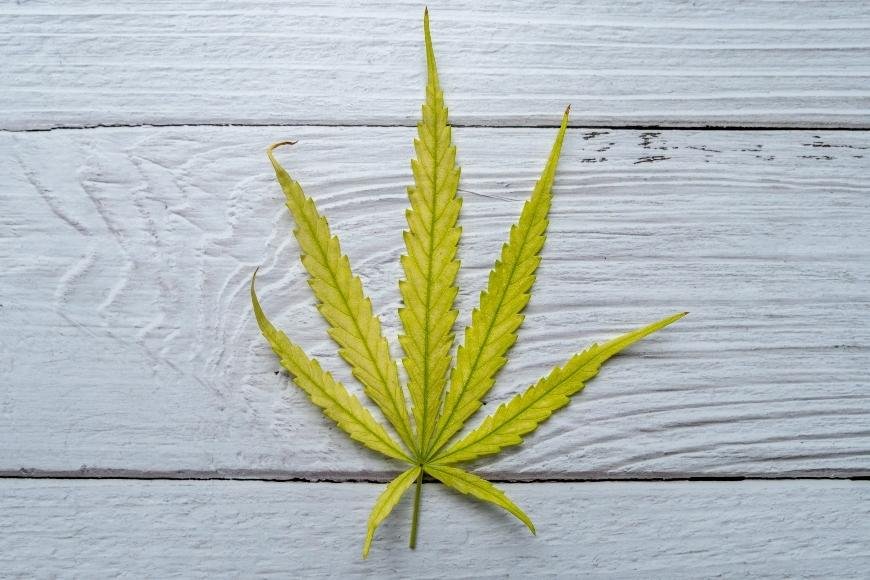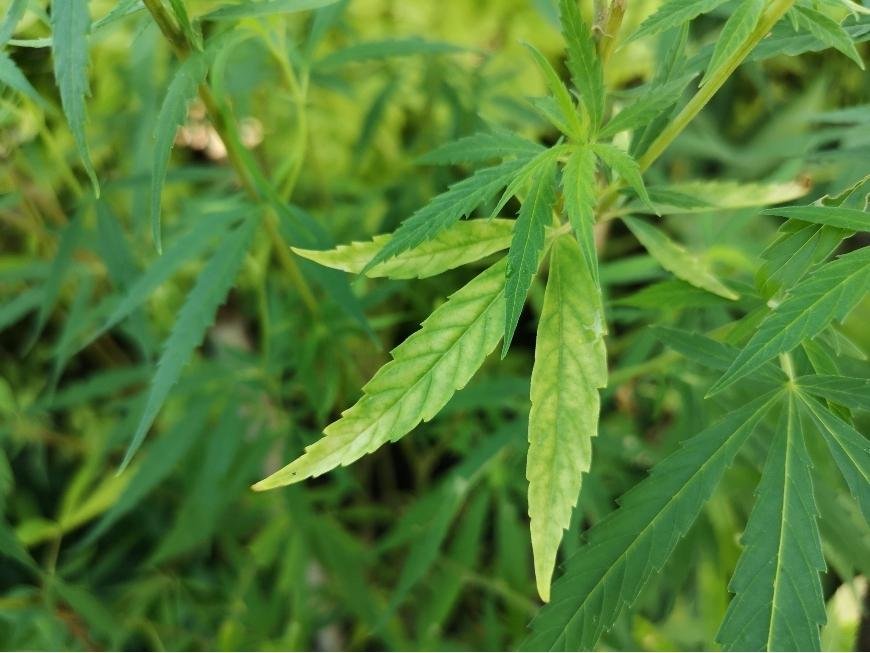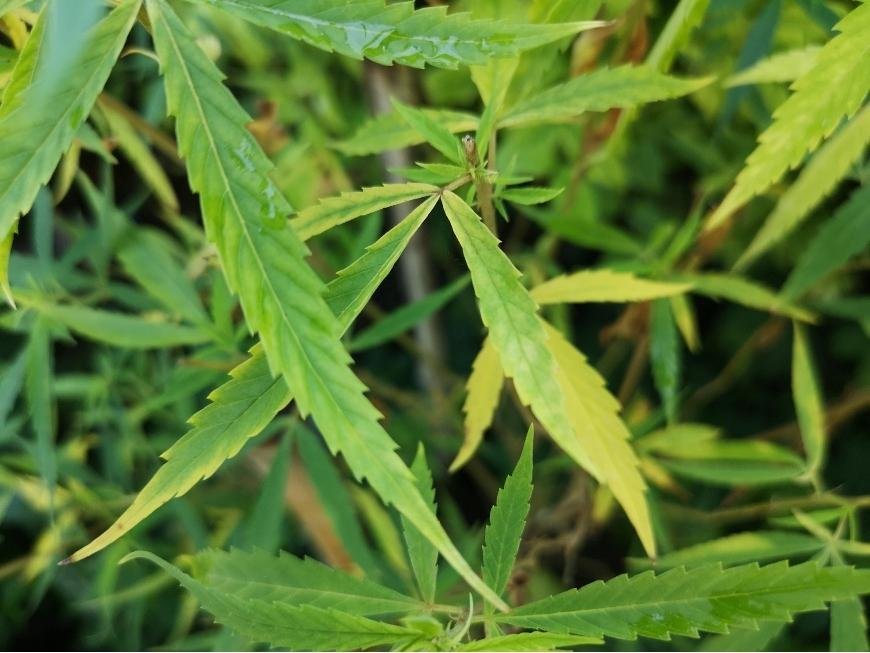How to Fix Sulphur Deficiency in Cannabis Plants
Discover how to fix sulphur deficiency in cannabis plants: identification, pH adjustments, supplements, and prevention for healthy growth.

Understanding how to fix sulphur deficiency in cannabis plants is essential for any serious grower, as it plays a vital role in plant growth and overall health. In this guide, we will explore the causes, symptoms and treatments of sulphur deficiency in cannabis plants - from testing soil for sulphur levels to applying foliar sprays.
As you read on, you'll learn about testing soil for sulphur levels and various ways to add sulphur to the soil or use foliar sprays to treat deficiencies. Additionally, maintaining appropriate pH levels is crucial for optimal nutrient uptake by your cannabis plants. We will discuss the role of pH levels in nutrient uptake and provide guidance on testing and adjusting soil pH levels accordingly.
This knowledge will not only help you fix cannabis sulfur deficiency but also empower you with valuable insights that contribute towards growing healthy marijuana plants consistently.
Table of Contents:
- Identifying Sulphur Deficiency in Cannabis Plants
- Yellowing Leaves (Chlorosis)
- Discoloration on Leaf Undersides
- Stunted Growth
- Adjusting Watering Practices and Soil pH Levels
- Flushing with pH-Balanced Water
- Adding Supplements Containing Sulphur
- Utilizing Organic Sources of Sulphur
- Preventing Future Sulphur Deficiencies
- Frequently Asked Questions How to Fix Sulphur Deficiency in Cannabis Plants
- Conclusion
Identifying Sulphur Deficiency in Cannabis Plants
Early identification of sulphur deficiency is crucial to prevent long-term damage or crop loss. Symptoms include yellowing of leaves (chlorosis), discolouration on the underside of leaves, stunted growth, and potentially dying flowers if it occurs during the flowering stage. Recognizing these signs allows for a quick response and timely intervention.
Yellowing Leaves (Chlorosis)
A common symptom of cannabis sulfur deficiency is the yellowing of leaves, also known as chlorosis. This typically starts with newer leaves at the top of your marijuana plants before spreading to older ones lower down. The veins may remain green while the rest of the leaf turns pale or even white.
Discoloration on Leaf Undersides
In addition to chlorosis, another sign that your cannabis plants might be suffering from sulfur deficiencies is discoloration on their leaf undersides. You may notice purple or red spots appearing along with an overall paleness compared to healthy foliage.
Stunted Growth
- Growing cannabis: If you're growing cannabis and notice that your plant's growth has slowed significantly or come to a halt altogether, this could indicate a sulfur deficiency issue affecting its development.
- Nitrogen deficiency: Sulphur deficiency can sometimes resemble nitrogen deficiency; however, unlike nitrogen issues where older leaves are affected first, sulfur moves slowly, so new growth is impacted before older leaves.
- Incorrect pH levels: Stunted growth may also be caused by incorrect pH levels in your growing medium, which can lead to nutrient lockout and further exacerbate the problem. Monitor and adjust the soil's pH to make sure your plants are getting adequate growth.
In summary, identifying sulphur deficiency in cannabis plants is crucial for maintaining their health and ensuring a successful harvest. Keep an eye out for yellowing leaves (chlorosis), discoloration on leaf undersides, and stunted growth as early indicators of potential issues with sulfur availability. By addressing these symptoms promptly, you can help prevent long-term damage or crop loss due to this relatively uncommon but impactful deficiency.

Adjusting Watering Practices and Soil pH Levels
Overwatering and high pH levels may contribute to a sulphur deficiency in cannabis plants. Maintaining appropriate soil pH levels ensures that sulphur and other nutrients are readily available to your plants. In this section, we will discuss proper watering techniques and ways to adjust soil pH for optimal nutrient uptake.
Proper Watering Techniques
To avoid overwatering, it is essential to understand your cannabis plant's water requirements. Overwatered plants can suffer from oxygen deprivation, leading to root rot or the development of harmful bacteria. To prevent these issues:
- Water only when the top inch of the soil feels dry.
- Avoid letting pots sit in standing water by using trays with drainage holes.
- Maintain a consistent watering schedule based on your pot's capacity and environmental conditions like humidity and temperature.
Adjustments for Optimal Soil pH
Soil pH levels play a crucial role in nutrient availability, including sulphur. Cannabis requires slightly acidic soil with a pH range between 6.0-7.0 for optimal growth:
- Determine current soil pH: You can use either an electronic meter or test strips designed specifically for measuring acidity/basicity within soils available at most garden centres to determine existing values accurately before making any adjustments as needed based upon results obtained.
- Adjust soil pH: Lowering soil pH can be achieved by adding sulfur or aluminum sulfate if it is too high. If the pH is too low, add lime (calcium carbonate) to raise it.
- Monitor and maintain: Regularly check your soil's pH levels and make adjustments as needed to ensure a healthy growing environment for your cannabis plants.
Maintaining proper watering practices and optimal soil pH levels will help prevent nutrient deficiencies like sulphur deficiency in cannabis plants. By staying vigilant about these factors, you'll be well on your way to producing a thriving crop with minimal issues related to nutrient uptake.
Flushing with pH-Balanced Water
One effective way to fix cannabis sulfur deficiency is by flushing your soil with properly balanced water. This process helps remove excess salts that could interfere with nutrient uptake while re-administering necessary nutrients at proper concentrations. In this section, we will explore when flushing should be done, how often, and tips for achieving effective results.
When to Flush Your Plants' Growing Medium
The ideal time to flush your cannabis plants' growing medium depends on the severity of the sulfur deficiency and the stage of growth. If you notice symptoms during the vegetative stage or early flowering phase, it's crucial to act quickly before irreversible damage occurs. However, if you're nearing harvest time and only see mild signs of deficiency in older leaves, a light flush may suffice.
Tips for Successful Flushing
- Maintain Proper pH Levels: When flushing cannabis plants due to sulfur deficiencies or other nutrient issues like nitrogen deficiency or incorrect pH levels, ensure that the water used has a pH level between 6.0-7.0 (for soil) or 5.5-6.5 (for hydroponics).
- Frequent Monitoring: Keep an eye on your cannabis leaves after each flush as they can provide valuable insight into whether additional treatments are needed or if improvements have been made since initiating treatment measures against potential nutrient lockout situations caused by imbalances within their respective environments, such as those resulting from overwatering practices leading up towards pot's capacity limits being reached prematurely without allowing adequate drainage opportunities first beforehand.
- Avoid Overwatering: When flushing cannabis plants, it's essential to avoid overwatering. Ensure that the growing medium is thoroughly soaked but not waterlogged. Allow excess water to drain out of the container before returning your plant back into its original position within your grow room.
- Reintroduce Nutrients Gradually: After a successful flush, reintroduce nutrients gradually by using a balanced fertilizer or other nutrient supplements like Epsom salts (magnesium sulfate) and potassium sulfate. Start with half-strength doses and slowly increase them as needed based on how well your cannabis plants respond during their recovery process from sulfur deficiency symptoms experienced earlier on throughout this journey towards achieving optimal health once more.
Incorporating these tips when flushing with pH-balanced water can help fix cannabis sulfur deficiency effectively while minimizing stress on your marijuana plants. Regular monitoring of soil conditions and adjusting watering practices accordingly will ensure that you maintain healthy growth for thriving yields in every harvest season.
Adding Supplements Containing Sulphur
To fix cannabis sulfur deficiency, it's essential to provide your plants with the necessary nutrients. One effective way is by adding supplements containing sulphur into the soil. These can help address deficiencies without causing further harm to your marijuana plants.
Epsom Salts (Magnesium Sulfate)
Epsom salts, also known as magnesium sulfate, are a popular remedy for sulphur deficiency in cannabis plants. They not only supply sulphur but also magnesium, which helps prevent nutrient lockout and supports overall plant growth. To use Epsom salts, dissolve one tablespoon per gallon of water and apply it during regular watering or as a foliar spray on affected leaves.
Ammonium Sulfate
Ammonium sulfate is another option for treating sulfur deficiencies in growing cannabis. This fertilizer, which contains both nitrogen and sulfur, is an ideal choice if multiple nutrient deficiencies are present. However, be cautious when using ammonium sulfate because excessive amounts can lead to nitrogen toxicity or incorrect pH levels in the soil.
Calcium Sulfate (Gypsum)
Calcium sulfate, commonly known as gypsum, provides calcium and sulfur while helping improve soil structure by reducing compaction. This makes it an ideal choice for cannabis plants experiencing sulfur deficiency and poor soil conditions. Follow the directions on the package precisely to make sure you are applying an accurate amount of gypsum.
Potassium Sulfate
Potassium sulfate is another supplement that can help fix sulfur deficiency in your cannabis plants while also providing potassium, which is essential for healthy growth and flowering. Like other supplements mentioned above, be sure to read and follow the application rates on the packaging to avoid over-application or nutrient burn.
Adding supplements containing sulphur is an effective way to fix a sulphur deficiency in cannabis plants, but it's important to note that organic sources of sulphur can also be beneficial. Organic sources of sulphur can offer their own advantages and should be weighed in when choosing the most suitable course of action for dealing with a lack.
Utilizing Organic Sources of Sulphur
Manure is an ideal organic source of sulfur for cannabis plants, not only to address deficiency but also to enhance plant health and soil quality. These options not only help fix sulfur deficiency but also contribute to overall plant health and soil quality.
Benefits of Organic Sulphur Sources
- Eco-friendly: By using organic materials like manure, you are reducing the need for synthetic fertilizers that may harm the environment.
- Better Soil Structure: Incorporating organic matter into your growing medium improves its structure, promoting better drainage and nutrient retention.
- Nutrient Release: As these organic materials break down over time, they release essential nutrients like sulphur slowly and steadily into the soil, providing a consistent supply for your cannabis plants.
Incorporating Manure in Your Soil
To effectively incorporate manure as a source of sulphur for your cannabis plants, follow these steps:
- Selecting Quality Manure: Choose aged or composted animal manures from cows or chickens. Avoid fresh manures as they may contain harmful pathogens or high levels of ammonia that could damage your plants. Check with local farms or garden centers for availability.
- Mixing with Growing Medium: Add about one part well-aged manure to three parts soil or potting mix. This will provide a balanced nutrient profile for your cannabis plants, including sulphur.
- Monitoring pH Levels: As with any addition to your growing medium, it's essential to monitor the pH levels of your soil after incorporating manure. Adjust as needed to maintain optimal conditions for nutrient uptake by your cannabis plants.
Incorporating organic sources of sulphur like manure into your cannabis cultivation practices can help fix sulfur deficiency while promoting overall plant health and sustainable gardening techniques. Remember always to select quality materials and adjust other factors such as watering practices and pH levels accordingly for the best results.

Preventing Future Sulphur Deficiencies
Prevention is key to avoiding future occurrences of sulphur deficiencies in your cannabis plants. By ensuring proper selection of fertilizers and growing mediums designed explicitly for cannabis cultivation, maintaining optimal pH levels within the growing environment through consistent monitoring, and adjusting accordingly if needed, you can promote healthy plant development during both vegetative growth phases leading up to successful harvests at season's end.
Choosing Quality Fertilizers & Growing Mediums
Selecting a high-quality fertilizer that contains adequate amounts of sulphur will help prevent nutrient deficiencies in your cannabis plants. When shopping for fertilizers, look for those specifically formulated for marijuana plants as they are more likely to contain the necessary nutrients in appropriate ratios. Additionally, choose a well-draining growing medium, such as coco coir or perlite mixed with soil, which allows excess water to drain away while still retaining essential nutrients like sulphur.
Monitoring pH Levels Regularly
Maintaining correct pH levels is crucial for preventing nutrient lockout and ensuring that your cannabis plants have access to all the essential elements they need. The ideal pH range varies depending on whether you're using soil or hydroponics:
- Soil: Aim for a pH level between 6.0-7.0.
- Hydroponics: Maintain a pH level between 5.5-6.5.
Watch your plants' wellbeing, inspect the soil regularly, and take action to guarantee a flourishing cannabis garden. Keep an eye on your plants' overall health, monitor soil conditions closely, and make adjustments as necessary to maintain a thriving cannabis garden.
Frequently Asked Questions How to Fix Sulphur Deficiency in Cannabis Plants
How do you fix sulphur deficiency in plants?
To fix sulphur deficiency in cannabis plants, follow these steps: adjust watering practices and soil pH levels, flush with pH-balanced water, add supplements containing sulphur like Epsom salts or ammonium sulfate, utilize organic sources of sulphur such as manure or gypsum, and prevent future deficiencies by monitoring pH levels regularly and choosing quality fertilizers.
What are the signs of sulfur deficiency in cannabis?
Sulfur deficiency in cannabis is characterized by yellowing leaves (chlorosis), discoloration on leaf undersides, stunted growth, and slow development. These symptoms typically appear first on new growth before spreading to older foliage if left untreated.
What pH does sulfur need to be for cannabis?
The optimal soil pH range for proper sulfur absorption by cannabis plants is between 6.0-7.0. Maintaining this slightly acidic environment allows for better nutrient uptake and prevents potential deficiencies from occurring.
How often can you spray sulphur on cannabis?
You can spray a diluted solution of wettable sulfur powder on your cannabis plants every 7-10 days during their vegetative stage to help prevent fungal infections and pests while providing additional sulfur nutrients. However, avoid spraying during flowering stages to prevent altering taste or aroma.
How can sulfur deficiency be prevented?
- Maintain proper soil pH levels
- Select high-quality fertilizers & growing mediums
- Incorporate organic sources of sulfurs like manure or gypsum
Conclusion
In conclusion, fixing sulphur deficiency in cannabis plants is crucial to ensure optimal growth and yield. It is important to identify the symptoms of sulphur deficiency, test soil for sulphur levels, add sulphur to the soil or use foliar sprays, and maintain appropriate pH levels for nutrient uptake. By following these steps, you can help your cannabis plants thrive.


























































































































